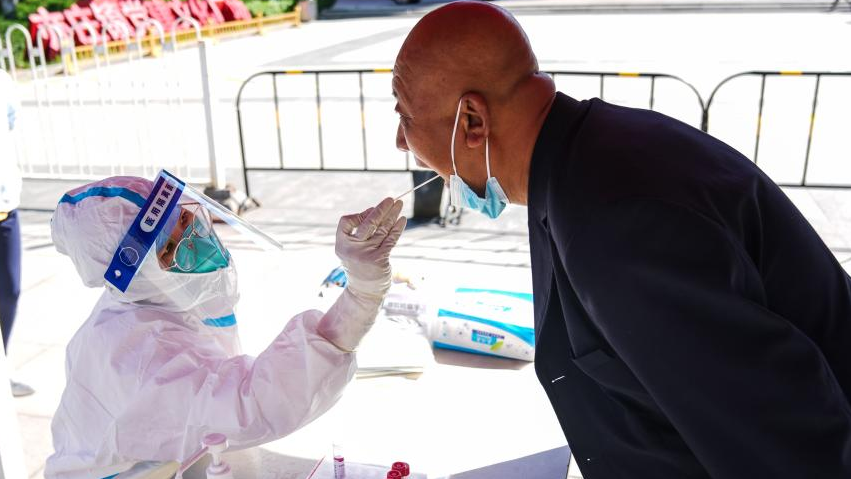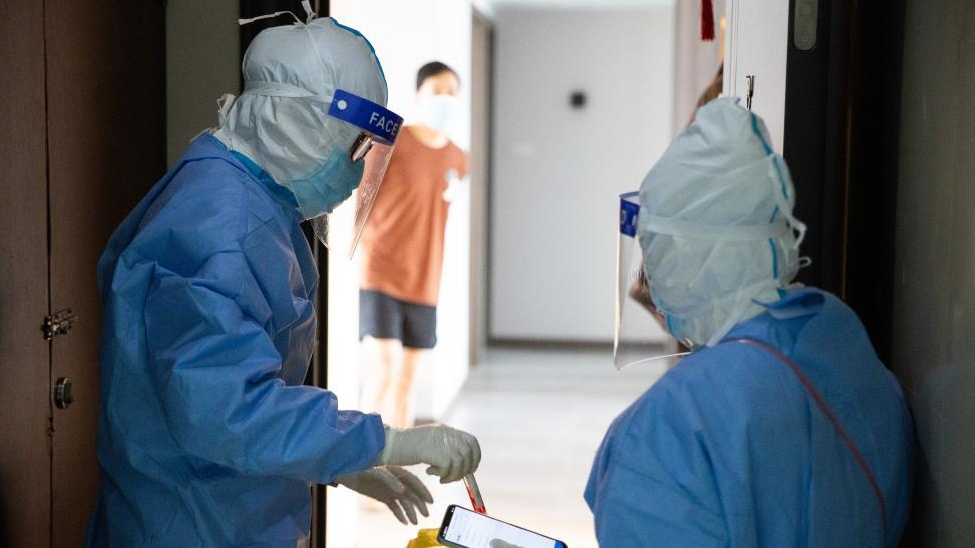
A medical worker takes a swab sample from a resident for nucleic acid testing in Daxing District, Beijing, capital of China, April 30, 2022. /Xinhua
A medical worker takes a swab sample from a resident for nucleic acid testing in Daxing District, Beijing, capital of China, April 30, 2022. /Xinhua
Editor's note: Yuan Sha is an assistant research fellow in the Department of American Studies at the China Institute of International Studies. A former Fulbright scholar at Columbia University, she has a PhD in international politics from China Foreign Affairs University. The article reflects the author's opinions and not necessarily the views of CGTN.
With a new Omicron variant putting China's "dynamic zero-COVID" policy under spotlight, it's an apt time to understand the exact nature of the policy, why it works in China, and how it is being adapted to the new developments.
The policy is not aimed at reaching zero COVID cases, which is almost impossible, given the infections worldwide and the rapid mutation of the virus. Rather, this is a comprehensive set of prevention and control measures stressing contact tracing, testing, timely treatment and mass vaccination.
The policy started out as a trial-and-error approach when the pandemic began over two years ago, aimed at balancing pandemic control with socioeconomic stability. From the early outbreaks in Wuhan in central China to later sporadic Delta variant clusters, the policy has proven successful, making China one of the countries with the lowest infection and mortality rate.
On the socioeconomic front, China's economy recorded better-than-expected performance in the first quarter of 2022, with GDP growth reaching 4.8 percent over the same period last year. This has contributed to the global economic recovery and supply chain stability.
Why the policy works in China
China is the most populated country in the world with densely populated urban areas. A developing country, it faces imbalanced socioeconomic development and public health infrastructure across regions. This national reality requires a stringent measure to control the virus from spreading across the country.
The "let's live with the virus" approach is untenable in China for now because senior citizens and children have still not reached the 91 percent national average vaccination rate. If the number of cases increases, they would be the most vulnerable. Therefore the dynamic zero-COVID policy is aimed at protecting the most vulnerable and achieving social resilience.

General practitioner Tian Ge (L) puts a swab sample tube into a bag at a building under closed-off management in Beicai Town of east China's Shanghai, April 26, 2022. /Xinhua
General practitioner Tian Ge (L) puts a swab sample tube into a bag at a building under closed-off management in Beicai Town of east China's Shanghai, April 26, 2022. /Xinhua
Luckily, China stands in an advantageous position to enforce this policy. The various governments at the central, provincial and municipal levels have the will and the ability to pool great resources to fight the pandemic. China has developed a powerful grass-root network, which is able to mobilize medical staff, community workers, private businesses and volunteers rapidly and efficiently. The people have also demonstrated great tenacity and social responsibility to combat the virus.
Adapting to changes
According to the World Health Organization, global COVID-19 cases surpassed 510 million by April, with over 6 million deaths. The Asian countries seen as pandemic-control models have had to grapple with Omicron cases.
In this complex and severe situation, it is China's top priority to adhere to the dynamic zero-COVID policy. It's a daunting task, especially in mega cities. So measures have to be upgraded according to new developments. A system of targeted control measures has been put in place to maximize virus control while minimizing the impact on society. While the Western media, not familiar with the situation, depicts it as a draconian lockdown, the reality is that it is a pragmatic and less dire measure. The most serious areas are isolated temporarily, with the isolation reviewed from time to time, the other areas, where the infection is not so severe, are control zones with certain restrictions, and others are precaution zones.
In 2020, a group of experts was formed to spearhead COVID-19 prevention and control. Recently, a new panel has been created to ensure smooth logistics across the country. And the measures are producing results. The northeastern province of Jilin, which had recorded an upsurge in Omicron cases, had all areas identified as high- and medium-risk in Jilin City, the former provincial capital, cleared by Thursday. In Shanghai, the Shanghai government made a "whitelist of 666 companies" that would be prioritized for resuming production.
(If you want to contribute and have specific expertise, please contact us at opinions@cgtn.com. Follow @thouse_opinions on Twitter to discover the latest commentaries in the CGTN Opinion Section.)

